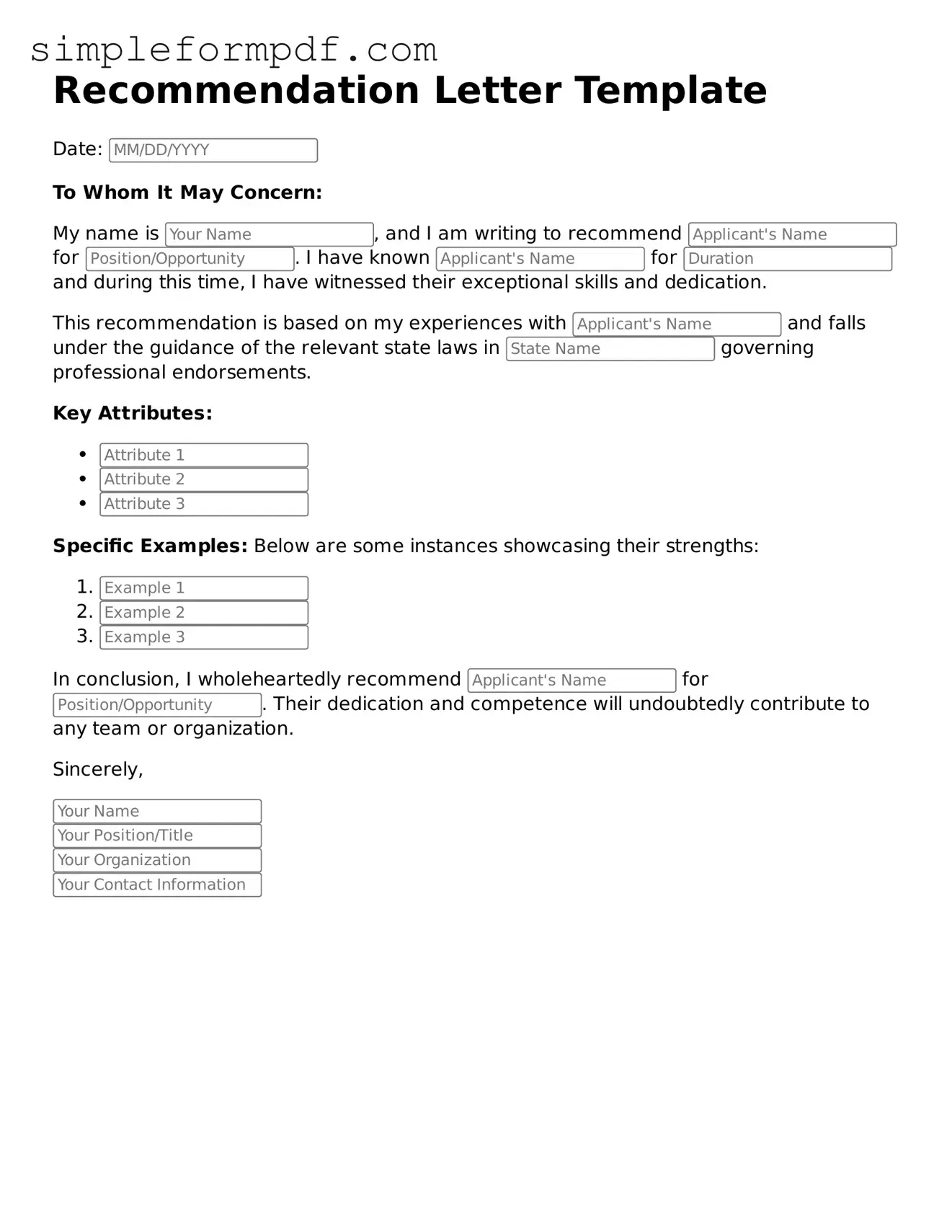Fillable Recommendation Letter Template
A Recommendation Letter form is a document used to request a written endorsement from someone who can speak to your skills, character, or accomplishments. This form helps streamline the process of obtaining valuable references that can support your applications for jobs, schools, or other opportunities. To get started, fill out the form by clicking the button below.
Launch Editor
